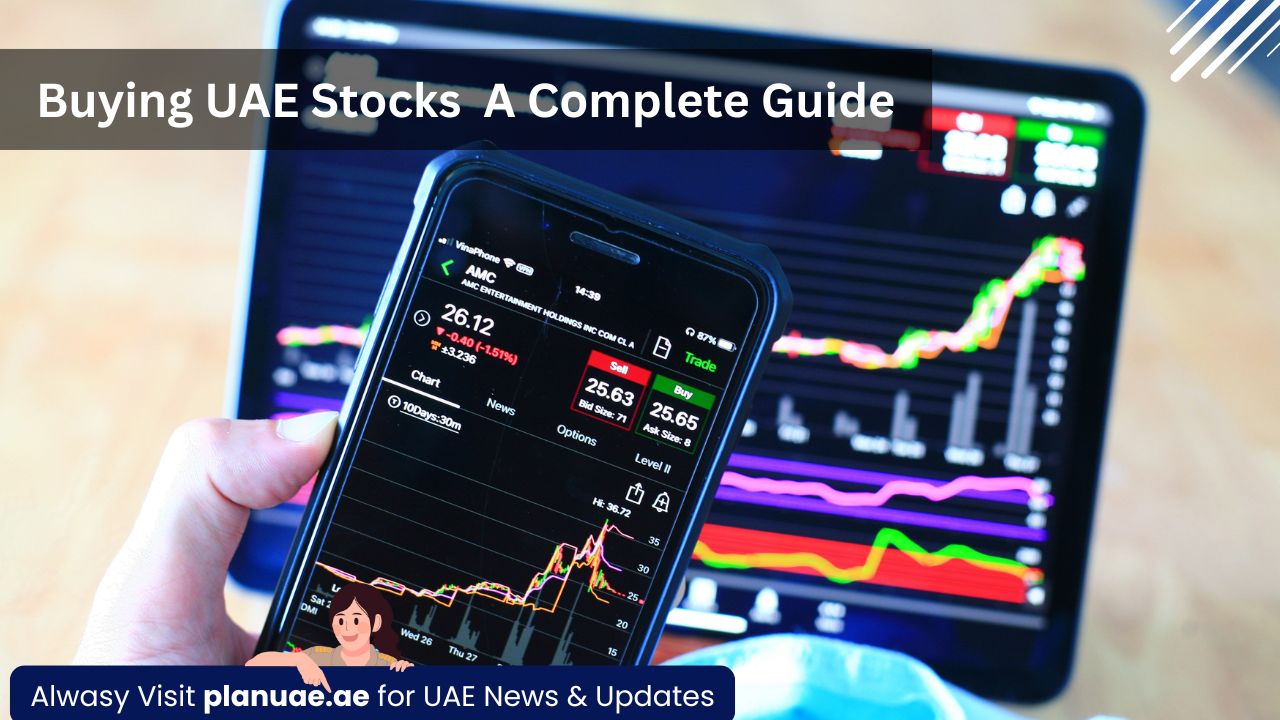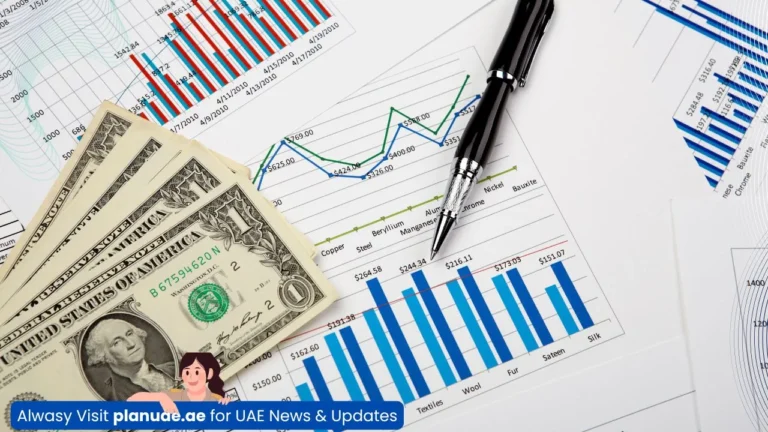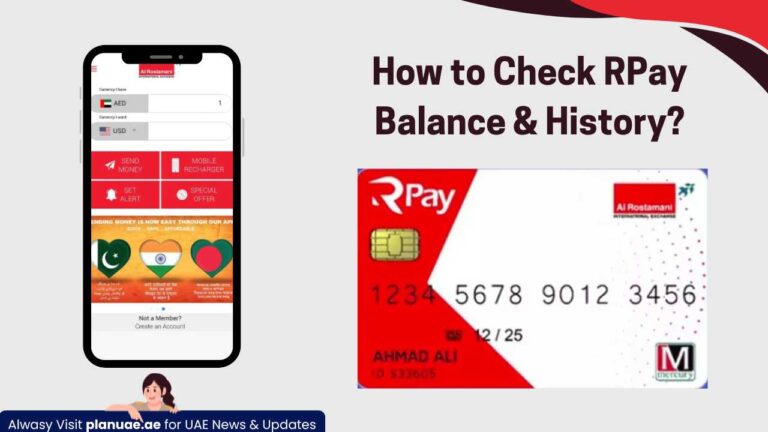In 2025, the United Arab Emirates is not just a hub for oil and luxury real estate. It is becoming one of the most dynamic investment environments in the world. With zero capital gains tax, access to international-grade exchanges, and a rising number of tech and green energy listings, UAE stocks are drawing attention from both local and global investors. But getting started in this market still requires clarity on the rules, the tools, and the right approach.
This guide breaks down how to invest in UAE-listed equities — whether you’re a resident, a regional investor, or a global participant looking to diversify.
Why Consider UAE Stocks in 2025?
If you’re exploring how to invest in the stock market in the UAE, it helps to first understand why local stocks are gaining attention. UAE equities offer a rare mix of steady dividends, sector diversification, and tax efficiency, all within a relatively stable macro environment.
- Strong dividend culture: Many UAE blue chips (e.g. ADNOC Distribution, Etisalat) pay regular dividends — in some cases with yields above 5%.
- Oil-linked and non-oil growth: You gain exposure to both energy and fast-growing sectors like banking, logistics, AI, and real estate.
- Stable currency: The dirham is pegged to the US dollar, helping shield investors from FX volatility.
- Zero capital gains tax: Personal investors don’t pay capital gains tax on UAE-listed stocks, making it a tax-efficient jurisdiction.
As of Q2 2025, the UAE’s market cap stands at over AED 3.6 trillion, led by listings on the Abu Dhabi Securities Exchange (ADX) and Dubai Financial Market (DFM). Both continue to outperform broader emerging market indices year-to-date.
Step 1: Understand the Main UAE Stock Exchanges
There are two primary exchanges in the UAE:
1. Abu Dhabi Securities Exchange (ADX)
- Known for larger-cap, energy, and industrial companies
- Increasing tech and IPO activity in 2024–2025
- Operates the ADX One platform, with advanced trading features and institutional access
- Flagship index: FTSE ADX General Index (FADXGI)
2. Dubai Financial Market (DFM)
- Home to financial services, logistics, and retail firms
- More focused on regional and consumer sectors
- Flagship index: DFM General Index
Both exchanges offer access to:
- IPO subscriptions (often with retail allocations)
- REITs and ETFs
- Shariah-compliant listings
Step 2: Choose Your Brokerage (Local or International)
To invest in UAE stocks, you need to go through a licensed broker. Investors can choose from:
A. Local UAE Brokers
These are based in the UAE and regulated by the Securities and Commodities Authority (SCA). Examples include:
- FAB Securities
- ADCB Securities
- Emirates NBD Securities
- ADIB Securities
Advantages:
- Local currency funding (AED)
- Access to IPOs and retail allocations
- In-person support and faster KYC for residents
B. International Brokers with UAE Market Access
Some global brokers offer UAE equity access through GCC markets integration. These include:
- Interactive Brokers
- Saxo Bank
- Exante
Advantages:
- Multi-currency portfolios
- Consolidated trading with US, EU, Asia stocks
- More sophisticated research tools
Step 3: Get a National Investor Number (NIN)
This is a critical requirement for trading UAE-listed securities. A NIN is issued by the exchange (ADX or DFM) and serves as your official market ID.
To obtain one:
- Apply through your broker
- Provide a valid Emirates ID or passport
- Complete basic KYC and investor declaration forms
Once your NIN is approved, it allows you to:
- Participate in IPOs
- Trade listed equities directly
- Access official shareholder services
Most brokers can issue your NIN within 1–2 business days.
Step 4: Fund Your Trading Account
Funding is usually done in UAE dirhams (AED) for local brokers or in USD/EUR for international ones.
Most platforms allow:
- Bank transfers (local and SWIFT)
- Internal transfers between accounts (for linked banks)
- Online top-ups using debit cards (on some apps)
Minimum deposit requirements vary:
- Local brokers: Often around AED 5,000–10,000
- Global platforms: Usually start at USD 1,000+
Always factor in currency conversion costs if you are funding from outside the region.
Step 5: Research and Select Stocks
Once your account is live, it’s time to build your UAE portfolio. In 2025, top sectors on both ADX and DFM include:
- Energy: ADNOC Gas, Dana Gas
- Telecoms: e& (Etisalat), du
- Financials: FAB, Emirates NBD, DIB
- Logistics: Aramex
- REITs and real estate: ENBD REIT, Emaar
You can also use:
- ADX One Market Watch
- DFM Investor App
- Third-party research platforms (like Zawya, TradingView, or Reuters)
Many brokers offer Arabic and English reports, including technical charts and dividend history.
Step 6: Place Orders and Monitor Performance
Most UAE trading platforms now offer mobile and web-based execution. Investors can place:
- Market orders: Buy at the current price
- Limit orders: Set a specific entry price
- Stop orders: Exit at a specific price for downside protection
Trading hours for ADX and DFM are typically:
- 10:00 am – 2:45 pm GST, Monday to Friday
In 2025, more platforms offer:
- Real-time notifications
- Portfolio rebalancing alerts
- Earnings calendar and dividend trackers
Tax-Free Gains, But Stay Compliant
The UAE remains a zero-capital gains tax zone for individuals. However:
- Corporate tax (9%) applies to businesses or side portfolios generating >AED 375,000
- Withholding tax is not charged on dividends for individuals
- Foreign investors should check their home country’s rules on declaring offshore income
For expats or global investors, the UAE offers significant after-tax return advantages — especially for long-term dividend investors.
Risks and Considerations
No market is risk-free. Before investing in UAE stocks, consider:
- Liquidity: Some mid- and small-cap stocks have low daily volumes
- Concentration: UAE indices are still dominated by energy and banks
- Currency risk: If investing from outside, AED/USD movements may affect your returns
- Regulatory changes: The UAE is modernizing rapidly, but policies (e.g. on IPOs or foreign limits) can shift
Staying updated on central bank policies, oil prices, and regional tensions is also essential when managing your portfolio.
What’s New in 2025: Trends Worth Watching
- Dual Listings: Some UAE companies are exploring cross-listings in Saudi or global markets
- ESG and green energy: New listings are emerging in clean tech, solar, and electric logistics
- Private market access: Investors can now access private equity and pre-IPO deals via platforms like Presight or Abu Dhabi’s Hub71-linked networks
- Real estate tokenization: Some brokers are testing fractional REIT investments through blockchain
The ecosystem is evolving fast. Many brokers are also adding robo-advisory tools and Shariah-compliant auto-invest portfolios.
Final Thoughts: UAE Stocks Are No Longer Niche
Investing in UAE stocks in 2025 is no longer just for regional insiders. With clear infrastructure, global access, and competitive tax policy, the UAE markets are attracting long-term capital from around the world.
Whether you’re seeking dividends, growth, or geographic diversification, the UAE offers a platform that is modern, regulated, and full of opportunity.
But like any market, success depends on doing your research, knowing your risk appetite, and choosing the right entry points.
If you’re serious about building wealth in the Gulf region, UAE equities deserve a place in your portfolio. And now’s a great time to start.









